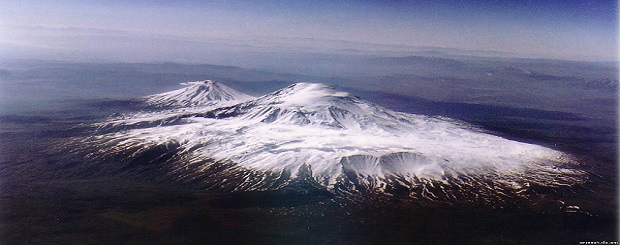
The Armenian people does not have any other place for retreat, except his homeland…
(translation from Armenian by “Miaban”)
This is an article, printed in Armenian in «The Testament of Ararat» («Ուխտ Արարատի») in 2012.
Today, Armenia and Armenian people clash closely, face to face with the problems and threats that we wrote about in the editorial section of the «The Testament of Ararat» («Ուխտ Արարատի») edition, starting in 2005. We wrote, warned and tried to develop and propose ways and means to overcome these threats.
But first, let’s summarize and outline these threats and challenges:
Threatening and harsh events in the military-political events in the Middle East, in particular around Syria and Iran. Relevant threats against the Armenians of Syria and Iran;
1. The likelihood of possible environmental and humanitarian disasters as a result of attacks on Iranian territory by nuclear or penetrating bombs (1);
2. Possible provocations related to a negative natural, man-made or terrorist act at the Metsamor Nuclear power plant, and their consequences, which were mentioned in the Program «Armenia 2010», organized by NATO in Armenia (2);
3. The threat of provoking a trilateral (or quadrilateral with the participation of the Kurds) war in the Caucasus (3);
4. Toughening the blockade of the Republic of Armenia with new means, including food and energy;
5. The imposed disarmament of the Republic of Armenia and the deployment of peacekeeping forces in the region (4).
As a result of these and other listed threats, the loss of independence, sovereignty of the Republic of Armenia and the destruction of the Armenian state may occur.
In response to the threats, we proposed to undertake a comprehensive self-defense program for the Armenian people and Armenia, one of the main steps of which would be the adoption of a permanent, armed, positive policy of neutrality for the Republic of Armenia. However, a decision on this has already been made, which allows organizing self-defense of the Armenians of the Middle East at a very high level.
Summing up, we note that in all cases, for Armenians living in this region have nowhere to retreat except their Homeland — Western Armenia and Cilician Armenia.
Or otherwise — if the Armenians of this region will have to deport again and have to form “migration caravans” again, then these “caravans” will have no choice to go but to Western Armenia and Cilician Armenia, which is their right and which, incidentally, should be obliged to protect by international community to atone for their great sin of inaction in the disaster committed 90 years ago. Armenians living in the region have the right to do this (on their lands), because they are in such a situation as a result of Genocide and deportation.
It is worth noting once again that without a comprehensive settlement of the Armenian and Kurdish issues, it is impossible to establish a long and lasting peace in the region and to expect real development and progress.
Public initiative «The Testament of Ararat» («Ուխտ Արարատի»), of the freedom fighters and former political prisoners of the Armenian secret Army for the liberation of Armenia
February 9, 2012
——————
References
1. Mane Hakobyan, “Regional, global environmental consequences of a possible bombardment of Iranian territory with penetrating bombs”, “The Testament of Ararat” publication, No. 2 (20), November-December 2010, pp. 16-17.
2. “NATO exercises in Armenia. Opening the border with Turkey, the accident at the nuclear power plant and the evacuation of Armenians through Georgia” and other materials, “The Testament of Ararat”, No. 2 (20), November-December 2010, pp. 14-15.
3. Raffi, “The Kurdish Union”, 1880, “The Testament of Ararat”, No. 1 (17), March — April 2009, pp. 12-21. “Kurdish Settlement in Azerbaijan…”, ibid., p. 27. Stephen Blank, “Kurdish Question and Nagorno-Karabakh”, ibid., pp. 30-31.
4. Annexes to the UN Declaration «On Millennium Challenges» and the Law of the Republic of Armenia «On International Treaties», «The Testament of Ararat», No. 1 (19), March-April 2010, p. 5.

